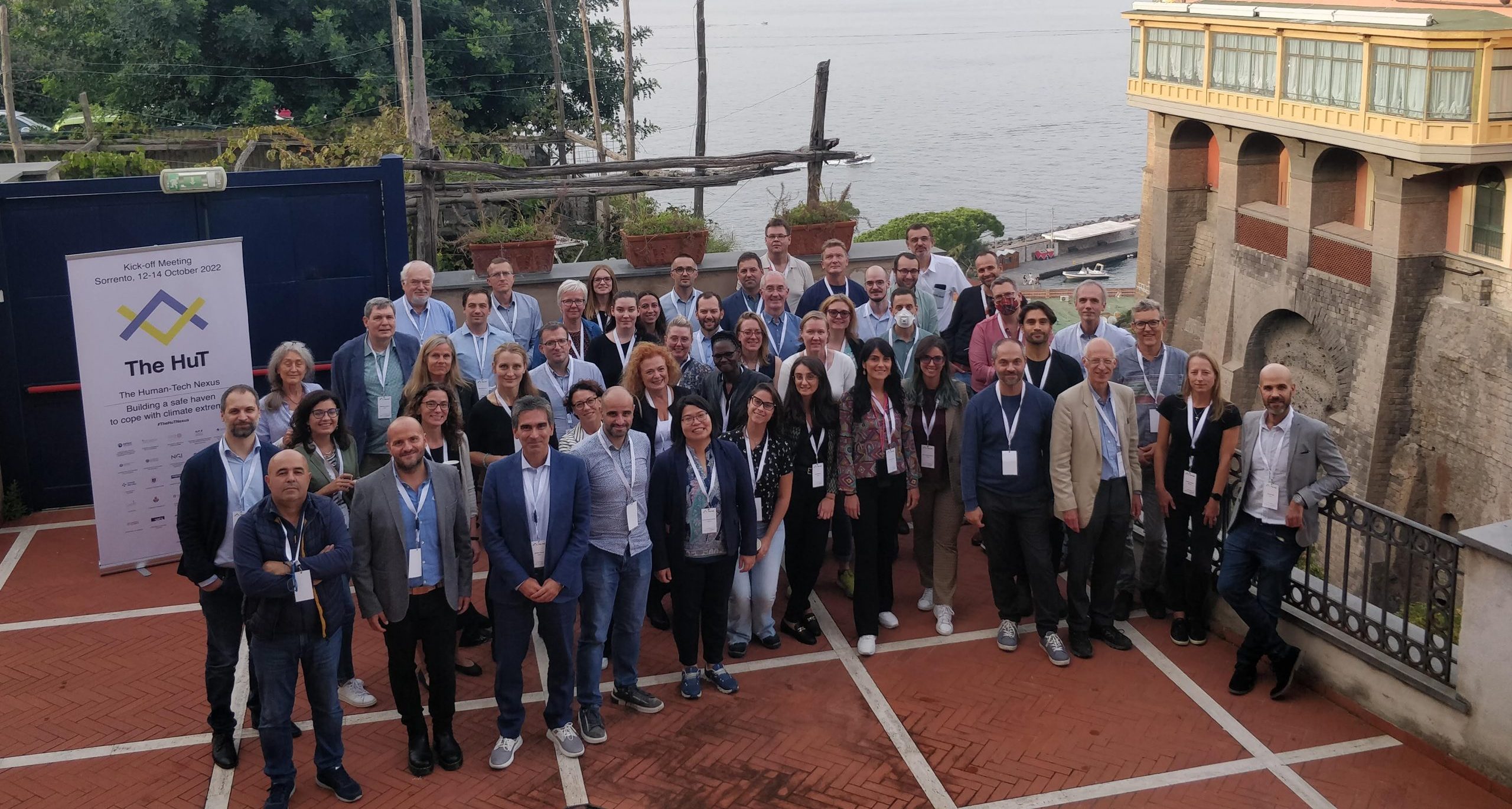Building a safe haven to cope with climate extremes
Press Release -
Our changing climate is throwing up ever more threatening extremes. Whether it is storms producing extremes of rainfall, triggering floods and landslides, or the baking heat of summer producing forest fires and drought.
Across Europe communities are having to learn to live with these increasing threats to their homes and livelihoods, which we know are going to multiply in the years to come. Each community has unique challenges and a unique structure to address them, but their solution can benefit from the lessons learned by others. What they look for is a guide to making their community more resilient to these current and future threats, with signposts to the directions they should follow in the circumstances they find themselves.
The “HuT” (Human-Tech nexus) addresses this need. At its core are ten individual communities working with experts to solve local problems of resilience. From the ten journeys towards resilience that they will take, the HuT will extract stories, tools and skills to share across the project and beyond. It will synthesise these into a guidebook for other communities to follow in co-developing local solutions to local resilience needs across Europe.
The individual communities are widely distributed across Iceland, Hungary, Spain, Italy, Germany, Lithuania, the UK, and Switzerland. They range in size from a village to a city to a state, with a corresponding range of administrative structures. They are threatened by floods, fires, landslides, heatwaves, storms and droughts. In short, they represent the climate adaptation challenges of thousands of communities across Europe and the world.
The HuT aims to help these communities to make themselves into “safe havens” through application of the monitoring and prediction capabilities of physical scientists and the behavioural understanding of social scientists to their preparedness for disasters within the context of local and national governance.
The HuT brings together a collaboration of leading European research institutions, including social and scientific expertise, with stakeholders, thereby establishing impact pathways from the start, and strengthening the European research landscape by means of knowledge-to-action demonstrations in the systemic reduction of extreme climate risks. On October 12th 2022, 62 participants gathered in the Italian city of Sorrento to mark the official start of the four-year project. Motivated by an inspirational welcome from the mayor of Sorrento, delegates reviewed the aims and objectives of the HuT and confirmed the initial actions that will begin to make it a reality.
The coordinator of The HuT, Prof. Michele Calvello of the University of Salerno commented, “The HuT will deal with the risk associated with extreme climate events, leveraging on a Human-Tech nexus and considering the following main critical dimensions: trans-disciplinarity, systemic risk, co-production, cross-fertilization, transferability, and long-term legacy. Indeed, the project’s main ambition is to promote ‘best sets’ of risk management tools and approaches that could be adopted extensively across Europe, in as many situations as possible, to ultimately co-build with stakeholders ‘a safe haven for coping with climate extremes’. How does an individual, a user group, a city, or a region define their safe haven? Understanding risks and opportunities is the crucial first step towards the safe haven desired by stakeholders. Recognising the distinct characteristics of local contexts, the project acknowledges that to reach this final destination there are different pathways and different timelines, which can however be grouped around a central narrative: ‘The HuT for Me and You’.”
“The HuT project will address the possible impacts of extreme climate events by adopting a trans-disciplinary “all-hazards” approach, connecting the sectoral silos associated with individual events and enabling joint and coordinated planning and adoption of multi-hazard disaster risk reduction (DRR) solutions. ICONS, responsible for the Work Package on “Communication, Dissemination and Exploitation” will work since the very beginning to reach, engage, and make synergies with key target audience and stakeholders, promoting the vision and goals of The HuT towards all those relevant subjects that are affected by climate disasters’ events Europewide. To reach this goal ICONS will implement a communication, dissemination and exploitation multi layered approach, addressing local communities and promoting interactions among demonstrators to promote replicability and best practice sharing”
(Ilaria Bonetti, ICONS’ PM responsible for The HuT project)
For further information on The HuT, contact Ilaria Bonetti – Senior Project Manager
